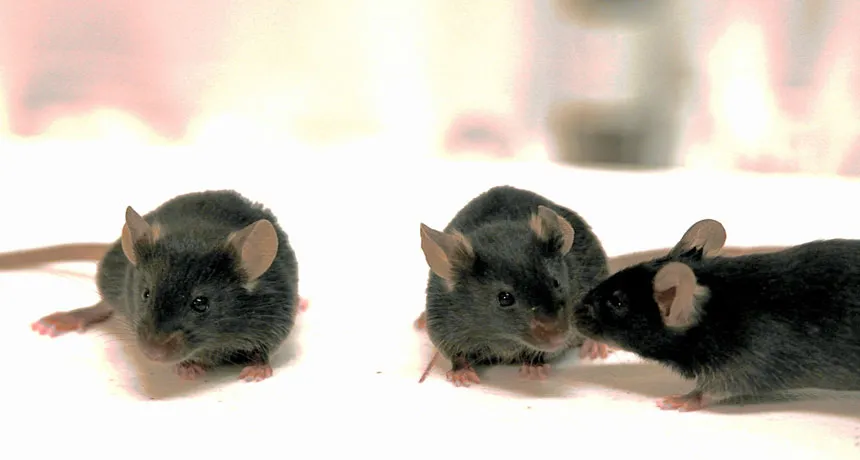Mice smell, share each other’s pain
Olfactory signal suspected as way hurt sensitivity is transmitted mouse-to-mouse

OVERSHARING Odor cues from mice in pain can make roommates more sensitive to pain themselves, a new study suggests.
Boris Heifets, Monique Smith
- More than 2 years ago
Pain is contagious, at least for mice. After encountering bedding where mice in pain had slept, other mice became more sensitive to pain themselves. The experiment, described online October 19 in Science Advances, shows that pain can move from one animal to another — no injury or illness required.
The results “add to a growing body of research showing that animals communicate distress and are affected by the distress of others,” says neuroscientist Inbal Ben-Ami Bartal of the University of California, Berkeley.
Neuroscientist Andrey Ryabinin and colleagues didn’t set out to study pain transfer. But the researchers noticed something curious during their experiments on mice who were undergoing alcohol withdrawal. Mice in the throes of withdrawal have a higher sensitivity to pokes on the foot. And surprisingly, so did these mice’s perfectly healthy roommates that were in nearby cages. “We realized that there was some transfer of information about pain” from injured mouse to bystander, says Ryabinin, of Oregon Health & Science University in Portland.
When mice suffered from alcohol withdrawal, morphine withdrawal or an inflaming injection, they become more sensitive to a poke in the paw with a thin fiber — a touchy reaction that signals a decreased pain tolerance. Mice that had been housed in the same room with the mice in pain also grew more sensitive to the poke, Ryabinin and colleagues found. These bystander mice showed other signs of heightened pain sensitivity, such as quickly pulling their tails out of hot water and licking a paw after an irritating shot.
The results are compelling evidence for the social transmission of pain, says neuroscientist Christian Keysers of the Netherlands Institute for Neuroscience in Amsterdam.
Pain’s contagion seemed to spread through the nose, further experiments revealed. After spending time with bedding used by mice in pain, healthy mice’s pain sensitivity went up. Some olfactory signals may have been transferred from the pained mouse onto the bedding before a mouse not experiencing pain showed up and began sniffing around. Ryabinin and colleagues are looking for compounds that might carry this pain signal mouse-to-mouse.
Implications for people are unknown. Humans’ olfactory skills fall short of other animals’, so it’s unclear whether odors can actually transmit information about pain, Ryabinin says.
While the data suggest that scent signals can carry the pain message, Keysers points out that other senses, such as hearing or vision, may be important too. Mice could see their compatriot in distress or hear pained squeaks. Still, the new paper fits with other work that shows “rodents exchange information about their states in many exciting and complex ways,” Keysers says.
A better understanding of the various ways animals can become more sensitive to pain may help explain more generally why pain comes and goes. The results suggest that sometimes, “there is no need for a specific injury for an animal to feel pain,” Ryabinin says. Instead, social factors or cues can influence pain perception. That idea may help explain the experience of some people who suffer from chronic pain, a condition that can begin mysteriously or persist long after an injury heals.
Editor’s note: This story was updated on November 4, 2016, to correct the description of how the mice in the study were housed.






